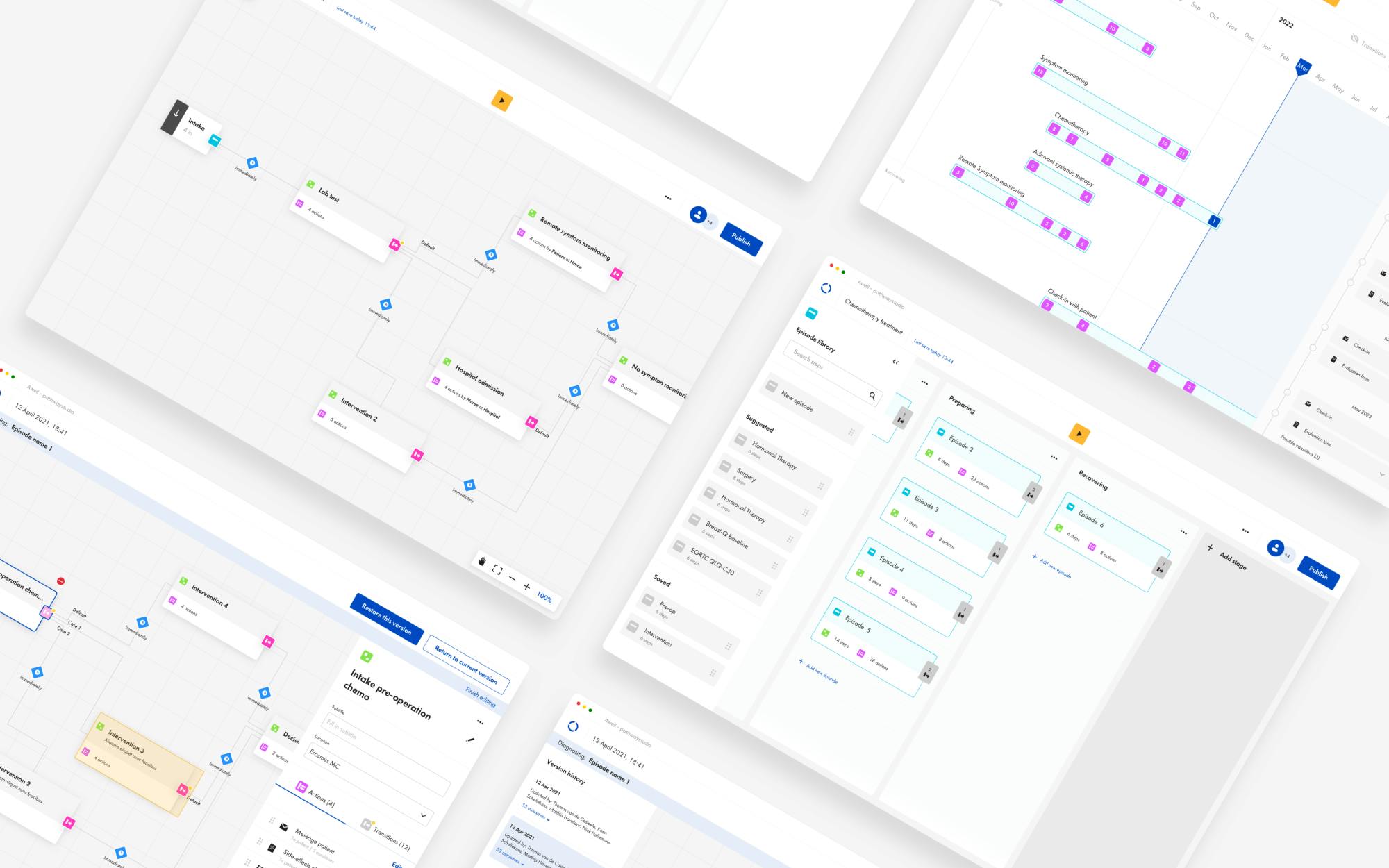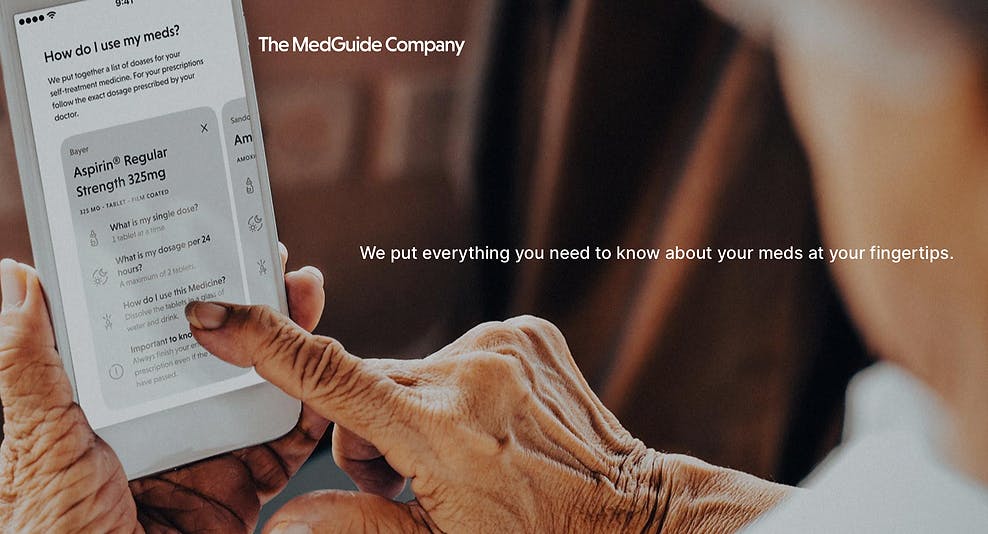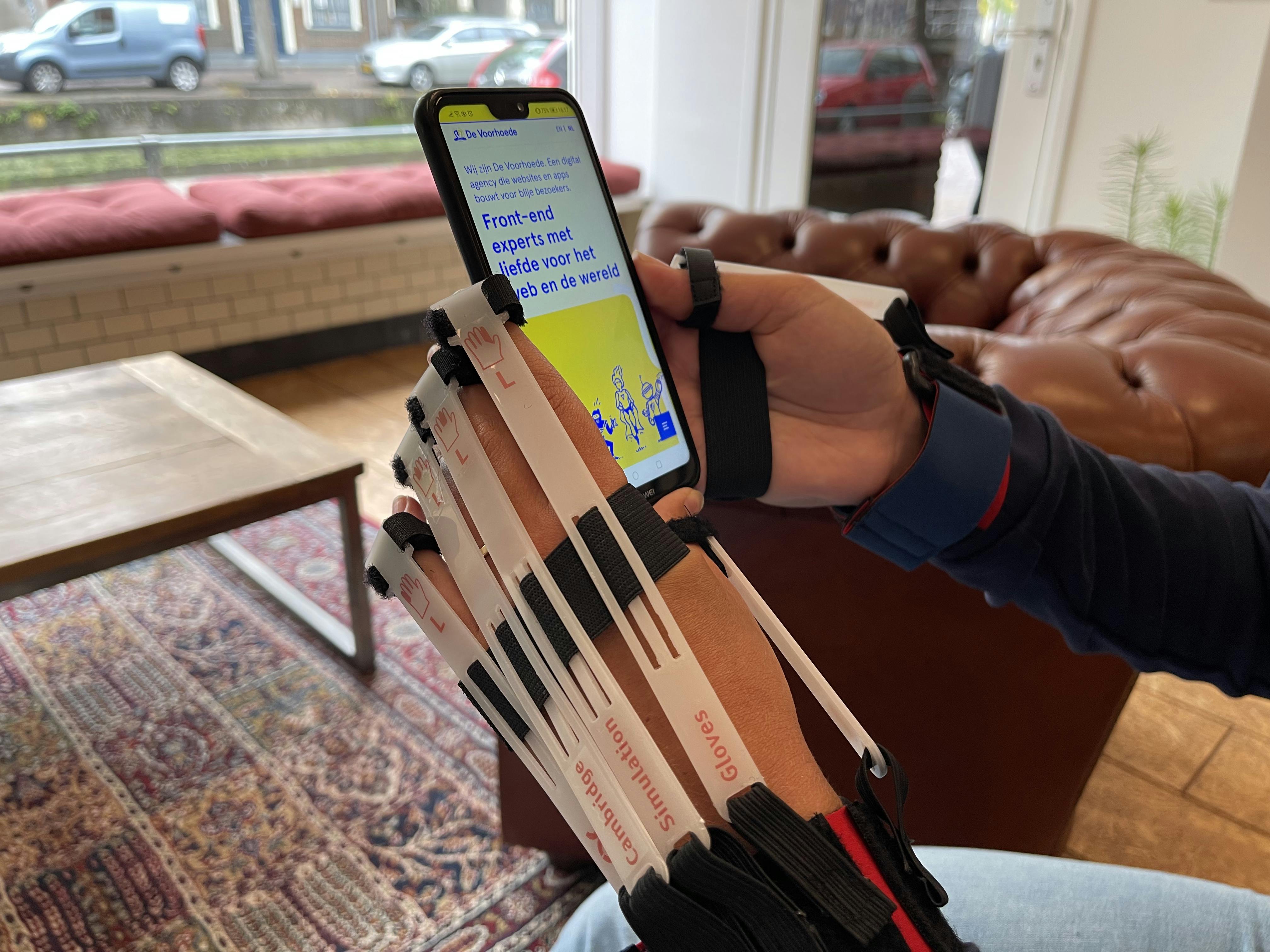The Dutch healthcare system, like many others, faces cost pressures and staff shortage. Encouraging patients to manage their health and seek appropriate care in other ways can help reduce the burden on the healthcare system.
Meaning self-sufficiency by patients is becoming increasingly important and patients are getting more control over their healthcare journey. This results in healthcare organisations embracing digital solutions as a cure. But like all cures, they don’t come without some risks and side effects. We provide a clear package leaflet to support the right use of digital products.
Package leaflet: information for the management team
Please read this leaflet carefully.
What is in this leaflet?
- What is a digital product and why use it?
- How do you use a digital product?
- Possible side effects
- Risks of using a digital product
- How do you keep your digital product healthy?

1. What is a digital product and why use it?
An example of a digital product is a chatbot, dashboard, app or portal. These products enable patients to access their health information, track their progress, and communicate with healthcare providers remotely.
Contribute to better health outcomes
There's a growing recognition that informed and engaged patients can contribute to better health outcomes. Patients who actively take part in their healthcare decisions are often more motivated to adhere to treatment plans and make positive lifestyle changes. Digital tools can provide patients with personalised information, resources, and tracking capabilities. From medication reminders to dietary recommendations.
An app we created for MedGuide to provide patients information about the medication they’re using
Engage and connect with patients
Digital solutions offer healthcare institutions a powerful means to engage and connect with patients. Patient portals, mobile apps, and telehealth platforms enable patients to access their medical records, schedule appointments, and communicate with healthcare providers remotely. This not only enhances convenience but also empowers patients to take an active role in their healthcare journey.
Automate to reduce costs
Administrative tasks can often be time-consuming and labour-intensive. Digital solutions can automate appointment scheduling, billing, and record-keeping processes, freeing up valuable time for healthcare professionals to focus on delivering quality care. This efficiency can lead to reduced administrative costs and improved patient satisfaction.
2. How do you use a digital product?
The digital product can be integrated and connected to your current applications. For this we use an API (Application Programming Interface). We use this independent piece of software to exchange information between your current application and your new digital product. There’s no need for existing connections, which means no limitations on your digital product. For example your administration or treatment plan software can correspond with your brand new chatbot or be shown in a dashboard thanks to the API.
An example of Awell how you can increase efficiency by connecting your digital product to software you’re already using.
3. Possible side effects
Patients and professionals will start relying on the product. This means your product always needs to be up-to-date and working appropriately. Bugs and errors may appear when using a digital product. To prevent these side effects we run trails with real users. We also write tests that simulate user interaction, to catch bugs and errors in advance. For bugs and errors that still slip through we have a support system in place that will catch them as soon as possible. Most of the time these side effects are harmless and can be cured within an appropriate time by one of our development experts.
4. Risks of using a digital product
Using digital products comes with risks. We have included the most important risks in this leaflet.
Forgetting the importance of the healthcare professional
While self-sufficiency via a digital product in healthcare has its benefits, it's important to strike a balance. Some patients might need more guidance and support, especially those with complex or chronic conditions. Healthcare professionals play a vital role in guiding patients' self-management efforts and ensuring that patients have access to accurate and reliable health information.
Privacy of the patient
Always handle personal data with care. The privacy of the patient is extremely important. Make sure patient data is stored securely and communication channels are encrypted. This fosters trust between patients and healthcare providers. Lack of privacy can lead to distrust and eventually switching health care providers.

Accessibility of the product
Ensuring that healthcare applications and digital tools are accessible to everyone (also with disabilities) is not just a matter of compliance, but also a fundamental ethical consideration. As people get older, more physical and mental disabilities start to appear in their health. A relatively high percentage among those people are in need of professional care.
Lack of accessibility in digital healthcare can lead to worse care taking. This happens when people are not able to effectively communicate with their caretaker, access health information or make well informed decisions. By prioritising accessibility, the healthcare industry can bridge gaps in healthcare delivery, improve patient outcomes, and promote inclusivity in an increasingly digitised healthcare landscape.

5. How do you keep your digital product healthy?
Keeping a digital product healthy is an ongoing commitment in the ever-evolving world of technology. Software is always a work in progress. To ensure its vitality, continuous testing and development are important. This involves a process of iterating, designing, and testing to adapt to changing user needs and market demands. Regular updates are vital to address vulnerabilities, enhance features, and improve performance.

Digital healthcare strategists
External expertise can play an important role in finding the core problem and perfect solution for your digital healthcare product.
At De Voorhoede we can help you with your long term digital strategy, roadmaps, managing software architecture and actually creating your digital product. Together we ensure that your digital product remains robust and responsive to the demands of the healthcare market.
Do you want to reduce administration, increase efficiency or optimise accessibility in your healthcare product? Schedule an inventory workshop with our digital strategists to discover how to improve or create your digital product.
Read more about our inventory workshop



